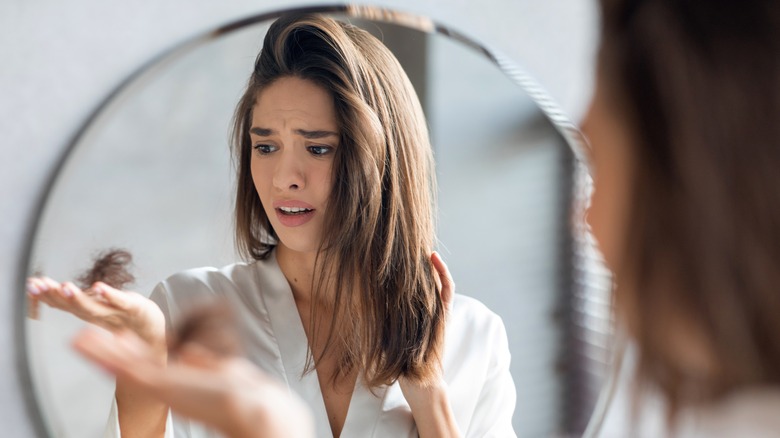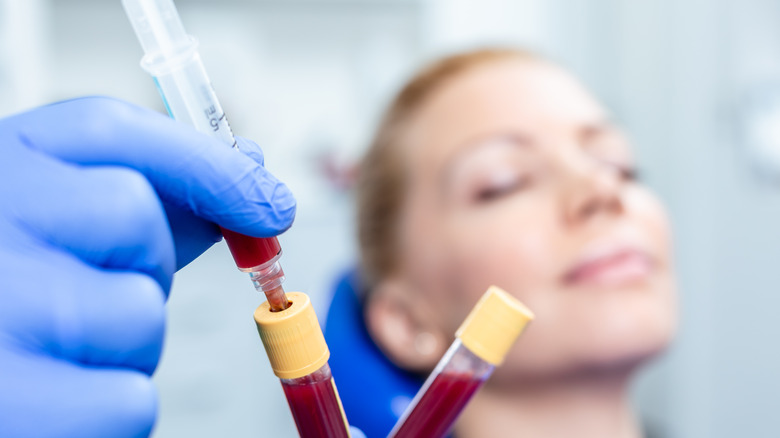Does The PRP Hair Treatment Really Work For Hair Loss?
Seeing your hair fall out can be devastating. Sadly, more than 40% of women experience this problem by age 40. Sometimes, hair loss is due to stress or other lifestyle factors, but it can also indicate an underlying condition.
A common cause is androgenetic alopecia, a hereditary disorder affecting both men and women. Thyroid disease, scalp infections, or even sexually transmitted diseases can cause hair loss, according to the American Academy of Dermatology Association. However, if you're losing your hair due to an underlying disorder, you may also have other symptoms. For example, people with thyroid disease may experience itching, changes in skin color, rashes, or brittle nails in addition to hair loss.
On the positive side, you may be able to regrow your hair and stop it from falling out. One solution is platelet-rich plasma (PRP) therapy, which uses your own blood cells to stimulate hair growth and speed up healing. PRP injections are widely used to treat musculoskeletal injuries, arthritis, and other conditions, but they may also help with hair loss, says Johns Hopkins Medicine.
The science behind PRP therapy
PRP therapy has been around since the '70s. Back then, it was used to treat thrombocytopenia, a health condition affecting platelet count, according to a recent review published in Drug Design, Development and Therapy. Platelets are microscopic blood cells that form clots and stop bleeding when a blood vessel is damaged. Therefore, they accelerate healing and tissue regeneration.
More than half of our blood volume consists of plasma, a substance rich in protein, hormones, and micronutrients. The other half contains red and white blood cells, plus platelets. During PRP treatment, the doctor will draw a small amount of blood from your arm and then process it in a machine to separate platelets from other blood cells, explains Washington University Orthopedics. After that, he will inject the platelet-rich plasma into your scalp, joints, or other areas, depending on the condition being treated. Platelet-rich plasma is also used for Vampire Facials, a popular anti-aging treatment.
PRP therapy is generally safe because it uses your own blood and, therefore, it's unlikely to cause allergic reactions. However, you may not be eligible for it if you have a localized infection, unstable or abnormal blood pressure, internal bleeding, sepsis, or other conditions, notes the Drug Design, Development and Therapy review. Apart from that, the side effects are minimal. In rare cases, patients may experience nerve or tissue damage, bleeding, or infection, reports Johns Hopkins Medicine.
Can PRP therapy stop hair loss?
Current evidence presented in the journal Drug Design, Development and Therapy supports the use of PRP injections for androgenetic alopecia, female pattern hair loss, alopecia areata, and similar conditions. In clinical trials, patients experienced improvements in hair count, density, and thickness within three to six months of treatment. What's more, PRP therapy may also help with cicatricial alopecia, an inflammatory condition that destroys the hair follicles.
For example, a 2020 study found that PRP therapy increased hair density and thickness in women with androgenetic alopecia. The effects kicked in after eight weeks of treatment, reports the Journal of the American Academy of Dermatology. Another study compared PRP treatment to minoxidil, a topical product for hair loss. The patients treated with platelet-rich plasma experienced more hair growth and greater satisfaction than the minoxidil group, notes the International Journal of Trichology.
These findings indicate that PRP therapy can be effective for hair loss. A typical session takes about 40 to 60 minutes and has minimal side effects. By comparison, minoxidil may cause a burning sensation, localized acne, scalp inflammation, blurred vision, weight gain, and other more severe reactions. In some cases, it may even worsen hair loss.
As far as pricing goes, you can expect to pay anywhere between $2,000 and $11,375, according to RealSelf. The cost of treatment depends on the clinic, the size of the affected area, and the number of sessions needed, among other factors. Additionally, PRP injections can be used along with microneedling to get better results, which can drive the cost up.


